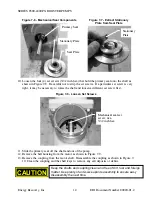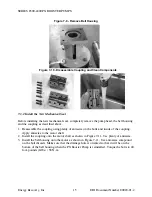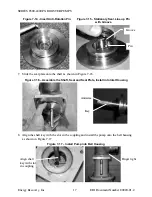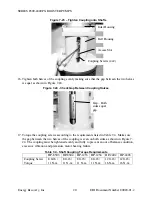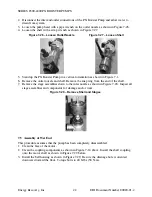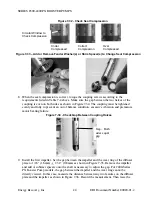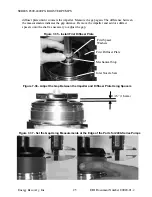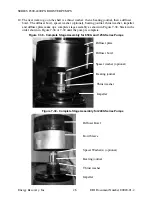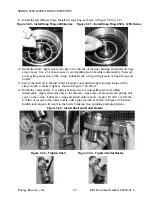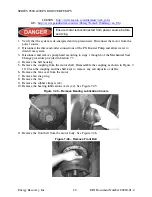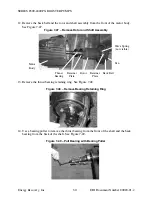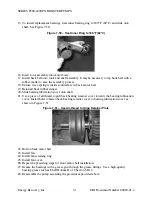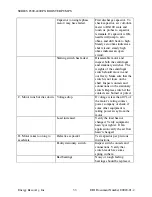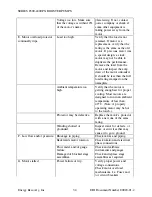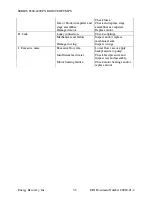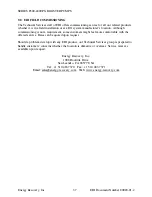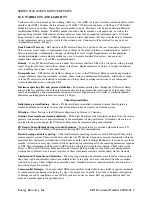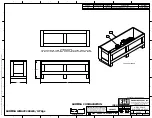
SERIES 8500-2400 PX BOOSTER PUMPS
Energy Recovery, Inc.
28
ERI Document Number 80020-01-2
15. At this point the wet end is completely reassembled. Check to see that the shaft can turn
relatively free by hand. The purpose for the ideal impeller gap spacing is to keep the
impellers free inside the bowls. The bowls are held in place by the compression applied by
the outlet nozzle while the splined shaft spins the impellers. If the gap spacing is incorrect
and the impellers rub/ interfere with the bowls, premature failure of the pump may occur.
A small amount of rubbing during an initial break in period is acceptable.
After the pump is reassembled and back on the RO plant make sure that water is fully flowing
through the unit before starting. The pump cannot be run dry for even a few seconds. Damage
will occur in seconds if the pump runs with insufficient feed flow. Refer to Section 6.2 for
complete start up procedures.
7.6 Motor Bearing Service
The motor bearings in ERI motors will provide a long service life if properly and regularly
lubricated. The motor manual included in Section 12.0 provides guidance for proper motor
maintenance. In case of bearing failure, ERI supplies the replacement bearings listed in Table
7-5.
Table 7-5 – Replacement Motor Bearings
BOOSTER PUMP
MODEL
BACK LOAD BEARING
FRONT THRUST
BEARING
HP-8503 10228-01 10227-01
HP-8504 10228-02 10227-03
HP-1253 GE
10228-02
10227-03
HP-1253 Leeson
10228-05
10227-04
HP-1254 10228-04 10227-02
HP-2402 10228-04 10227-02
HP-2403 10228-04 10227-02
In addition to the replacement bearings, the following tools are required: bearing puller,
bearing heater, snap ring removal tool, rubber mallet, all-thread, and appropriate sockets
and/or wrenches.
The following procedure describes removal and replacement of motor bearings. Consult the
current motor manual on the motor vendor’s website for additional guidance or information:
Insufficient torque on the outlet nozzle will result in
the bowls spinning and pump failure.
Never run the PX Booster Pump dry or with low feed flow.
Operating with feed pressures less than 15 psi (1 bar) or
below recommended the flow range can cause damage to
the pump’s internal components.
CAUTION
CAUTION

